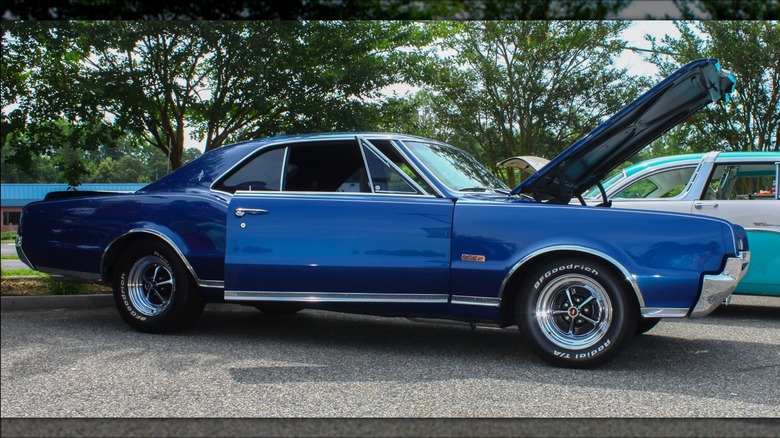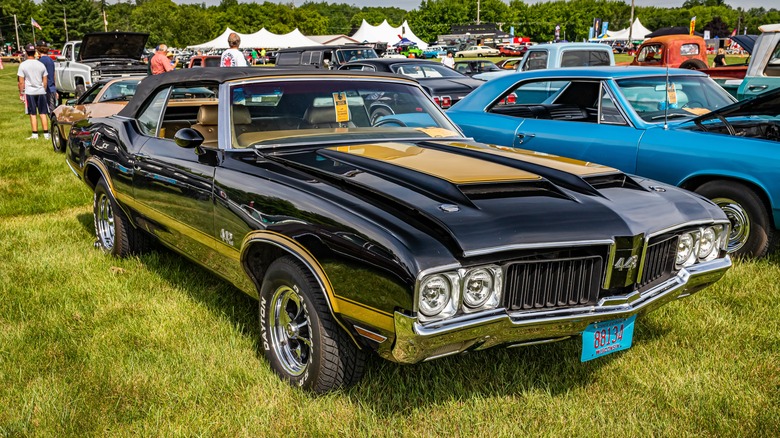Here's Where The Oldsmobile's 442 W-30 Name Comes From
At the dawn of the Muscle Car era, Oldsmobile wanted to create something that could compete with Pontiac's GTO. In 1964, the 4-4-2 came into existence, but as an option package (that cost $136) for the company's already existing F-85 and Cutlass models. It's certainly regarded as one of those important moments in the history of Oldsmobile.
The initially confusing 442 number/name didn't stand for the engine's cubic inch displacement (size) as one might expect. The package came with a 330-cubic-inch V8 (a 20 horsepower boost over the standard F-85 and Cutlass engines) stacked with police-spec add-ons like a four-barrel carburetor, four-speed manual transmission, and dual exhausts, thus the 4-4-2 designation (or "four-four-two"). It was also fitted with a high-lift camshaft, upgraded suspension, and broader six-inch wheels.
The option package didn't morph into its own line until '68, and that's possibly only due to sheer luck because bad marketing (something that would follow the 4-4-2) led to miserable first-year sales that could have doomed it out of the gate. By the following year, however, consumers found that a high-performance engine slapped inside a lightweight, midsized Oldsmobile body delivered a balanced car that handled exceptionally well and had impressive performance and great looks.
A star was born, one that would continue to grow over two-plus decades and six generations, finally retiring in 1987. Although, technically speaking, Olds did brand its '90 – '91 front-wheel drive compact Cutlass Calais coupe with a Quad 4-4-2 badge.
The 4-4-2 with all the bling
In 1965, the marketing confusion continued as the standard transmission in the 4-4-2 was a three-speed manual, but buyers could opt for a two-speed automatic or a proper four-speed manual. So, the PR department shifted (pun intended) the meaning of the 4-4-2 to refer to its new 400-cubic-inch V8 engine (producing 345 hp with 440 lb-ft of torque).
The following year, Oldsmobile offered a performance boost package on top of the 4-4-2 option package that seriously revved up the already powerful engine. Nothing confusing about any of that, right?
This W-30 performance option came with modifications starting with a triple-carburetor engine, a hotter camshaft, a unique cold air-induction system, and front bumper openings. The performance improvement was nothing short of dramatic. A 4-4-2 with the W-30 package won the C/Stock category at that year's National Hot Rod Association drag races.
In 1970, GM finally dropped its ban on engine displacement size, and Olds could put a 455-cid V8 with 365 hp and 500 lb-ft of torque into the 4-4-2. The W-30 package increased the horsepower to 370 while also adding a fiberglass hood, an aluminum intake manifold, a reworked camshaft, an improved carburetor, functional air ducts, a low-restriction air cleaner, better heads, and a distributor.
The W-30 eventually turned into an appearance package, and by '68, the hyphens in the 4-4-2 badging on the car were ditched yet stayed in marketing materials. Confusing until the end.

